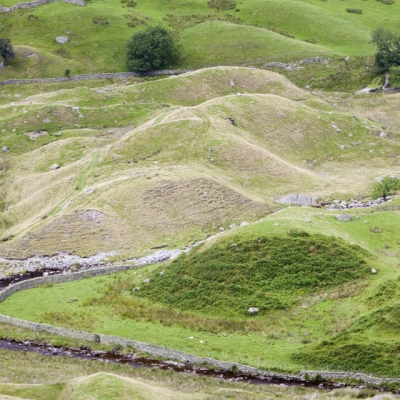
| Rounded or mound-shaped hills created by glacial ice, drumlins are often found in clusters. They are largely made up of sediment deposited by a glacier and can vary greatly in size. The name derives from a Gaelic word droimin meaning ‘smallest ridges’. |
Drumlin’s meaning is quite simple. Drumlins are elongated, oval-shaped or say teardrop-hills of rock, sand, and gravel. A drumlin is by and large made up of glacial drift, formed underneath an ice sheet or moving glacier and oriented in the direction of ice flow. There are no strict specifications with respect to the size of a drumlin but they tend to be up to a few kilometers up to 2 kilometers long and up to 50m in relief.
Drumlin glacier develops in the form of clusters apparently close to the terminus of glaciers. The mechanisms of formation are though disputed. They seemingly have significant interpretive value for rate and direction of glacial movement.
Drumlins are usually found in wide-ranging lowland regions, with their long axes approximately parallel to the path of glacial flow. Though they are observed in a multitude of shapes, the glacier side is always steep and high, while the lee side is tapered and smooth mildly in the direction of ice movement. Drumlins can hugely differ in size, with lengths from 1 to 2 km, heights from 50 to 100 feet, and widths from 400 to 600 m.
Credit: Vedantu
Picture Credit : Google





